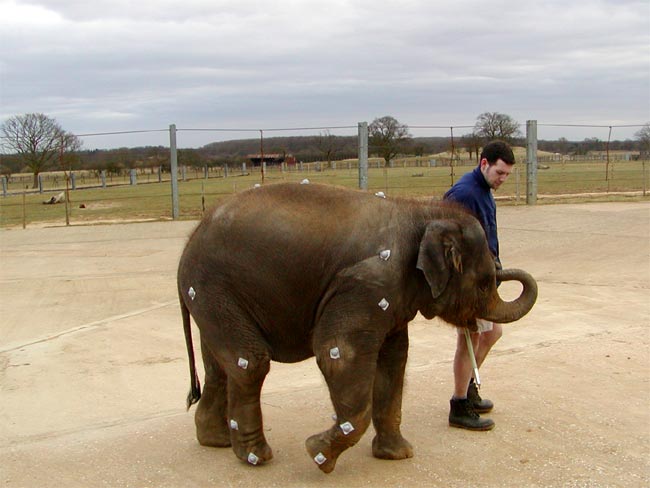Elephants Do Run, Study Concludes

When John Hutchinson, now at the Royal Veterinary College at the University of London, was in graduate school, it was still an open question whether an elephant moving at high speeds could be considered running.
His new study finds that although they're no greyhounds or cheetahs, fast-moving elephants have a springy step that qualifies them as runners within the animal world.
"No one knew," Hutchinson said. "But as the largest land animals, elephants were a study group that we needed to know more about, in order to interpret how dinosaurs might have moved, and uncover the basic rules about how giant land animals move."
Do the locomotion
The researchers used modern motion capture, similar to those used in "Lord of the Rings" and in video games, along with MRI and CT scans to visualize the positions of the joints of the fore and hind limbs, Hutchinson explained. Their six special cameras took 240 pictures per second and could capture far more detail than the naked eye or conventional video could.
[Photo | Video]
They soon found that although elephants don't lift all four feet at once, a previous definition of running, they showed signs of using their legs like pogo sticks, compressing and rebounding with each step. A pogo stick is a pole with a spring at the bottom and two footrests on which a person stands and moves by jumping.
"In the last 40 years, locomotion biomechanics has realized that this is the definitive feature of running—runners are bouncy-legged, whereas walkers are stiff-legged," Hutchinson told LiveScience.
Sign up for the Live Science daily newsletter now
Get the world’s most fascinating discoveries delivered straight to your inbox.
Many animals are now known to bounce without leaving the ground—many birds, insects, and Icelandic ponies for example. Even at their top speed of 15 mph, elephants keep one or two feet on the ground at all times.
Elephant knowledge
Understanding the motion of these animals can help researchers identify abnormal gait and musculoskeletal problems, which are normally difficult to recognize and treat.
"Our results will help vets and elephant keepers to identify elephant limb problems earlier," Hutchinson said.
The knowledge could also prove useful in understanding human gait.
Humans and elephants share a lot in terms of their locomotion. Both stand and move with unusually straight legs compared with other animals, and the proportions and anatomy of our thighs, shank and feet are similar, Hutchinson said. " Who knows, they may even reveal clues about the links between obesity and arthritis."
In robotics, the elephant locomotion could be used as a model for building giant legged vehicles that move as economically as these large animals.
This research appears in the current issue of BBSRC Business, magazine of the UK’s Biotechnology and Biological Sciences Research Council.










